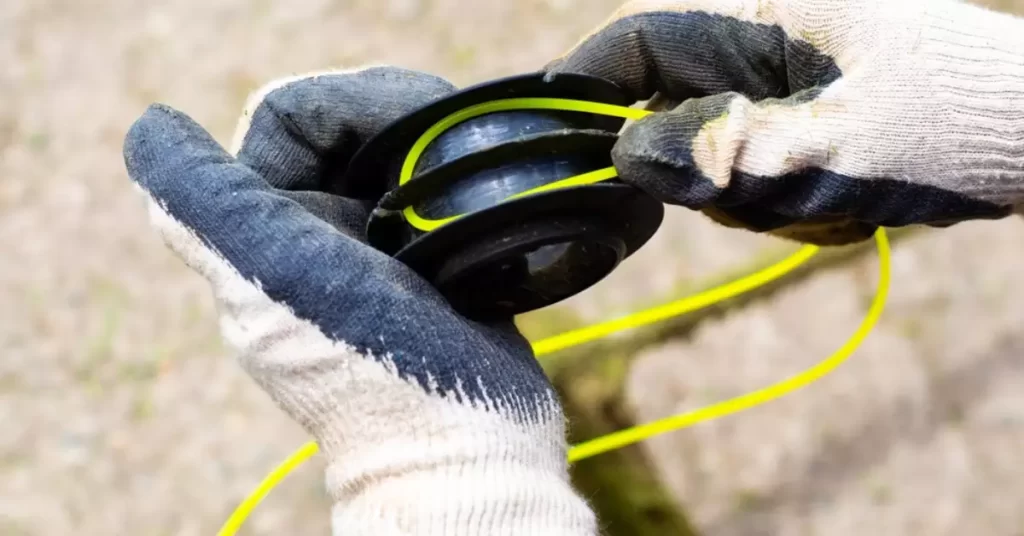Have you ever been in a situation where you’ve run out of thread and wondered if you could use a fishing line as a makeshift substitute?
It’s a question that might come up for sewing enthusiasts or those in a pinch needing to repair an item.
In this article, we will explore the feasibility of using a fishing line in a sewing machine, the types of fishing lines that can be used, the advantages and disadvantages, and some alternatives to consider.
Understanding Fishing Line and Sewing Thread
Fishing Line: Materials and Properties
Fishing lines are made from various materials, including monofilament, fluorocarbon, and braided lines.
These materials are chosen for their strength, flexibility, and resistance to abrasion. They are designed to withstand the pressures of catching fish and are typically thicker and more rigid than sewing thread.
Sewing Thread: Materials and Properties
Sewing thread, on the other hand, is made from materials like cotton, polyester, nylon, and silk.
These materials are chosen for their flexibility, softness, and compatibility with various fabric types.
Sewing threads are thinner and more pliable than fishing lines, allowing them to easily pass through the fabric and create secure stitches.
Can You Use Fishing Line In A Sewing Machine?
The Compatibility Issue
In theory, it is possible to use a fishing line in a sewing machine. However, it is not advisable for several reasons:
- Thickness and Rigidity: The fishing line is often too thick and rigid for sewing machines, which are designed to handle thin, flexible threads. Using a fishing line could cause damage to the machine’s tension system and needle.
- Stitch Quality: The fishing line lacks the elasticity and pliability of sewing thread, leading to poor stitch quality and potential seam puckering.
- Fabric Damage: The rigidity and thickness of fishing lines can also damage delicate fabrics, causing them to tear or fray.
Exceptions and Special Cases
While it is generally not recommended to use fishing line in a sewing machine, there are some exceptions:
- Invisible Stitching: A monofilament fishing line can be used as an invisible thread for temporary basting or when attaching decorations like sequins or beads. However, it is still not suitable for regular sewing projects.
- Heavy-Duty Sewing: Braided fishing line may be useful for heavy-duty sewing projects, such as repairing sails or outdoor gear, but this should only be attempted with industrial sewing machines capable of handling thicker threads.

Alternatives To Using Fishing Line In A Sewing Machine
Invisible Thread
Invisible thread, made from nylon or polyester, is a better alternative to the fishing line for invisible stitching.
It is designed for use in sewing machines and offers better stitch quality and fabric compatibility.
Heavy-Duty Sewing Thread
For heavy-duty sewing projects, consider using heavy-duty sewing threads like upholstery thread or bonded nylon thread.
These threads are designed for use in sewing machines and offer the strength and durability needed for heavy-duty applications.
Tips for Using Fishing Lines in Sewing Projects
If you decide to use fishing line for a specific sewing project, follow these tips to minimize potential issues:
- Choose the right fishing line: Opt for a monofilament fishing line if you need an invisible thread or a braided fishing line for heavy-duty applications on an industrial sewing machine.
- Use the appropriate needle: Select a needle that is designed to handle the thickness of the fishing line, such as a heavy-duty or leather needle.
- Adjust the tension: You may need to adjust your sewing machine’s tension settings to accommodate the fishing line. Start with a lower tension and gradually increase it until you achieve the desired stitch quality.
- Test on a scrap fabric: Before sewing on your main project, test the fishing line on a scrap piece of fabric to ensure it doesn’t damage the material or cause seam puckering.
FAQs
Can I use a fishing line for hand sewing?
While it is possible to use a fishing line for hand sewing, it is not recommended for most projects due to its rigidity and potential to damage fabrics.
However, monofilament fishing lines can be used for temporary basting or attaching decorations like sequins or beads.
What type of fishing line would be best for sewing?
If you must use a fishing line for sewing, a monofilament fishing line is the most suitable option due to its thinner diameter and relative flexibility.
However, it is still not ideal for most sewing projects.
Can I use a fishing line in an industrial sewing machine?
Industrial sewing machines are designed to handle heavier and thicker materials, so they may be able to accommodate fishing lines, specifically braided fishing lines, for heavy-duty projects like sails or outdoor gear repair.
However, it is still important to ensure that the machine’s needle and tension system can handle the thickness and rigidity of the fishing line.
Conclusion
While it is technically possible to use a fishing line in a sewing machine, it is generally not recommended due to potential issues with machine compatibility, stitch quality, and fabric damage.
There are more suitable alternatives like invisible thread or heavy-duty sewing thread that provide better results.
If you decide to use a fishing line for a specific project, follow the tips provided to minimize potential problems and achieve the best possible results.